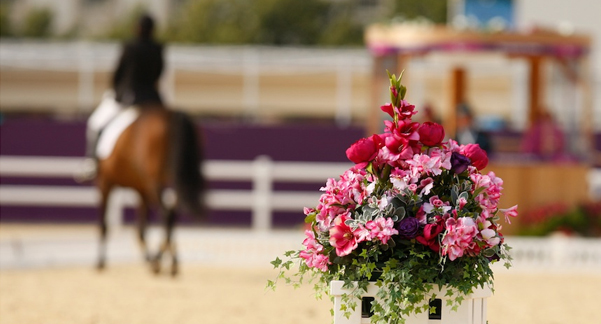Para-equestrian dressage
https://www.traditionrolex.com/42
https://www.traditionrolex.com/42

Para-equestrian dressage began to develop in Scandinavia and Great Britain in the 1970s of the last century. In 1987, the first World Championship in that sport was held in Sweden. In 1991, the International Paralympic Committee instructed the International Paralympic Equestrian Committee (more known by its abbreviation IPEC) to develop and promote the Paralympic dressage all over the world.
The Paralympics in Atlanta in 1996 became the first games attended by the Paralympic dressage athletes. In 2005, the IPEC included 38 countries from five continents. In 2006, the Paralympic equestrian sports became the eighth type of equestrian sports FEI and the IPEC was renamed into FEI PE; the FEI branch of the Paralympic equestrian sports.
The Paralympic dressage competitions are held in accordance with the FEI Charter, General Rules of the FEI, FEI Veterinary Regulations, FEI Rules for Paralympic dressage, General Rules of the FEI Paralympic Equestrian Competitions, Rules of the FEI Paralympic Equestrian Competitions and other rules and guidelines regularly updated by the FEI. The equestrian competitions at the Paralympics are open to people with disabilities, including amputees, blind and visually impaired, mental retardation. This type of the competitions is held at the Summer Games.
Equestrian competitions are held only in the individual class and in the only form - dressage. Athletes show their skills in passing a small segment on which they alternate the pace and direction of movement. At the Paralympics, athletes are grouped according to a separate classification. Winners are defined within these groups based on the demonstrated results. There are 10 sets of medals for men and women.
Athletes are classified into 5 levels:
- Level Ia - disabled persons with disabilities of all four limbs who use wheelchairs in everyday life, with impaired functions of the body.
- Level Ib - disabled persons with impaired body balancing and/or impaired functions of four limbs, or without the ability to balance.
- Level II - disabled persons using wheelchairs or having severe impairments of the musculoskeletal system.
- Level III - athletes who can walk without support but lack one or both hands, as well as blind and dwarfs.
- Level IV - independent athletes with poor eyesight or impairments of motor function and dysfunction of their hands or feet.
A classification is the definition of violations but not of an athlete's skills. The ability of a rider to control the horse is judged at the competitions, not in the process of classification. The purpose of the competitions is to pay tribute to the skill.
Author: Edition
https://www.traditionrolex.com/42








Comments (0)